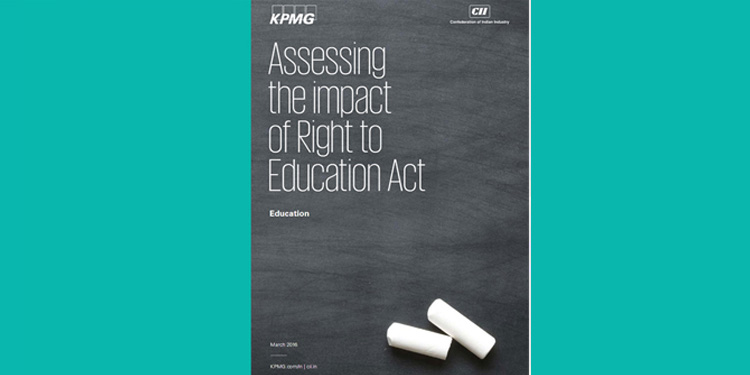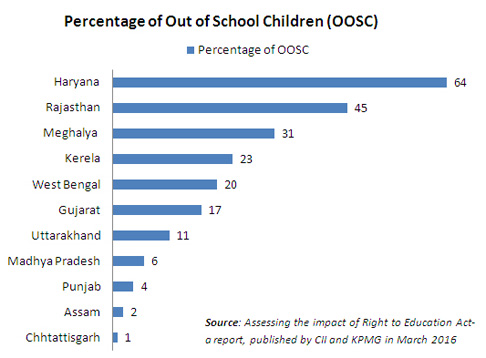
Assessing the Impact of Right to Education Act

• Kerala has achieved an average PTR ratio of 26:1 which is better than the mandate
• Tamil Nadu has admitted the maximum number of students under the RTE Act.
• Forty three per cent of the kids in government schools of Delhi reported they had no functional toilet in
their school. Forty seven per cent of the kids agreed they had no clean drinking water
• In 2015, 92 per cent of the schools in Odisha did not meet the prescribed standards. Also, 82 per cent
schools have no electricity facilities.
Challenges in Implementation of RTE
• No detention policy which was meant to help the student learn in a stress free environment has actually
defeated that purpose by decreasing the motivation of students for learning.
• RTE emphasis on age of student at the time of enrolment and not on intellectual growth
• Extremely challenging for teachers to teach students from varying background in the same classroom
• Lack of adequate teacher training
• Ineffective School Monitoring Committees
Some Recommendations
• Raise awareness among parents regarding the potential benefits of the RTE Act and disseminate
information to the SMC members about their role and responsibilities
• RTE should be decentralised and to avoid ambiguity in the roles of SMCs, state government and local
authorities, the Act should clearly demarcate the roles and responsibilities.
• Each and every state should notify an income limit for admission of EWS students in private unaided
schools, as it is not possible to dictate the determinants for income limits in law
• The creation of a ‘one window’ RTE Commission directly accessible to all stakeholders is a necessity to
translate the potential of RTE to a reality.
• Improving the physical infrastructure and human resources is a must for effective implementation of
the Act. In this regard, Public-Private Partnership models could be explored.
• It is essential for state governments to focus on quality of education and introduce evaluation methods
which test children’s conceptual understanding of subjects in the lower classes.
• In order to improve the educational standards, the government ought to introduce a national school
standard of education which is a practice globally.
Click here for full report

